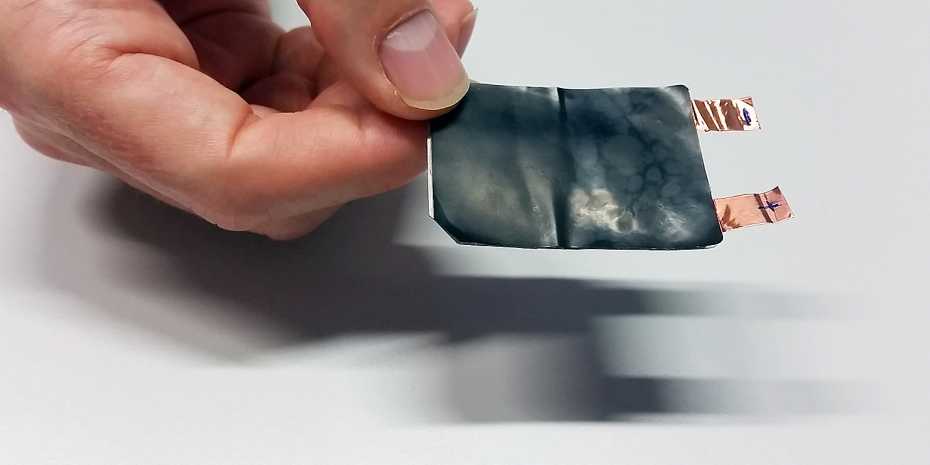
The sales roll-out of the Samsung Galaxy Fold seems to be running a bit sluggish at the moment. Not just due to a few teething problems. Take the display, for example, which still tends to shut down when opened or closed. But according to surveys, the smartphone trend in the coming years could well go in the direction of this new generation of foldable smartphones.
Not only mobile phones, but computers and tablets are getting screens that can be folded or rolled up. Clothing, too, is becoming increasingly smarter and able to monitor the wearer’s physiological state. Up until now, lithium-ion batteries have generally provided the necessary energy for all these devices and applications. Nevertheless, they have a decisive disadvantage: they are heavy and inflexible. Professor Markus Niederberger of the Department of Materials at the Swiss Federal Institute of Technology in Zurich (ETH) and his team have now developed a prototype of a stretchable thin-film battery. This can be bent, stretched and even twisted without any loss in performance.

‘Battery sandwich’ made of flexible components
The battery is structured like a sandwich, similar to a conventional battery. Yet the main difference is found in the materials used for the battery, i.e. solely flexible components for making the whole structure stretchable. “So far, nobody else has used exclusively flexible components as rigorously as we have to produce a lithium-ion battery,” Niederberger states. ETH doctoral student Xi Che designed a new type of electrolyte that the lithium ions must pass through when discharging or charging the battery.
More articles on innovative batteries can be found here.
The two current collectors for the anode and the cathode are also made of a stretchable plastic with electrically conductive carbon. The inside of the plastic has been fitted with a thin layer of tiny silver flakes that never lose contact with each other and conduct electricity when the plastic is bent or turned. In the event that the silver flakes do lose contact with each other, the carbon-containing plastic takes over their task and conducts electricity, albeit at a slightly weaker rate.

More research is needed
The space between the two electrodes is filled with an electrolyte gel that, according to Niederberger, is far more environmentally friendly than current materials of this kind. “Electrolyte solutions in present-day batteries are toxic and flammable,” says the scientist. The gel developed by Xi, on the other hand, is based on water. It’s a lithium salt contained in the gel that allows the lithium ions to migrate between the cathode and anode during charging and discharging. It also prevents the electrochemical decomposition of water.
More research is needed before the flexible battery is ready for the market, Niederberger emphasizes. Among other things, it is necessary to increase the charge capacity of the electrodes so that the battery is able to power end devices. It is also vital to be sure that the added material does not affect the elasticity nor the electrochemical properties. Or that the liquid does not cause any damage if, for example, the battery is sewn into clothing and subsequently leaks. In this case, the water-based electrolyte obviously offers decisive advantages.

